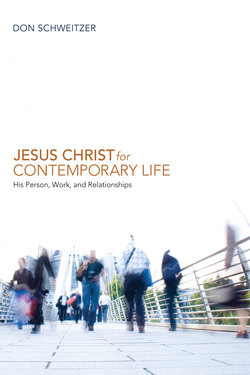Читать книгу Jesus Christ for Contemporary Life - Don Schweitzer - Страница 6
На сайте Литреса книга снята с продажи.
ОглавлениеPart I
Introduction to Part I
The following four chapters that comprise part I primarily seek to understand the person of Jesus Christ. The first three do this by following an ascending Christology, beginning with what can be known about Jesus historically and following the development of Christology in the early church and patristic era up until the Councils of Nicaea (325 CE) and Chalcedon (451 CE). An ascending Christology seeks to show the legitimacy of the affirmations of these councils as ways of understanding Jesus by showing the continuity between what they state and what can be known about Jesus historically and what was affirmed about him by the early church in the New Testament
Chapter 1 offers a portrait of Jesus drawn from the quest for the historical Jesus. Faith in Jesus Christ does not usually begin with what can be known historically about Jesus and it is not based upon this. But this study of Jesus Christ begins here for the following reasons. The Gospels interpreted the history of Jesus each in a different way in light of his resurrection, the early church’s experiences of the Holy Spirit, and the concerns and insights of the church communities they originated from. The quest for the historical Jesus attempts to discern the historical figure of Jesus amidst this interpretation. The results of this quest are never final. But historical knowledge of Jesus can provide a check on the human imagination’s temptation to fashion images of Jesus determined by self-interests and can also help keep an understanding of Jesus historically concrete, showing how and where Jesus located himself amidst the social conflicts of his day. From this we can gain a sense of where one should follow Jesus and expect to encounter him in the present.
Chapter 2 examines New Testament descriptions of Jesus’ resurrection and its meaning for Christian faith. It is necessary to study Jesus’ resurrection in order to understand who Jesus Christ is and the nature of his saving significance. It was as a result of Jesus’ resurrection that he was proclaimed as the Christ and became the center of what became a new religion. In the course of this Jesus’ resurrection triggered a far-reaching doctrinal development that eventually helped transform the Christian understanding of God.
Chapter 3 traces the course of this transformation, examining the development of the patristic church’s understanding of Jesus Christ that culminated in the decisions of the Councils of Nicaea and Chalcedon. These decisions did not end christological inquiry. They are interpreted here as providing guidelines for understanding Jesus Christ. In tracing this development this chapter also notes some gains and losses it involved for the early church’s understanding of Jesus Christ.
Chapter 4 reverses the direction of inquiry and presents a descending Christology. Chapter 3 traced and critically accepted the developments leading to the affirmations of Nicaea and Chalcedon. This chapter seeks to understand Jesus Christ and God in light of them. Given that Jesus is the Christ, the incarnation of the second person of the Trinity, how should the Trinity be understood? What was the reason for the incarnation? By answering these questions, this chapter provides a metaphysical framework for the understanding of Jesus’ saving significance and relationships that follows in parts II and III.
